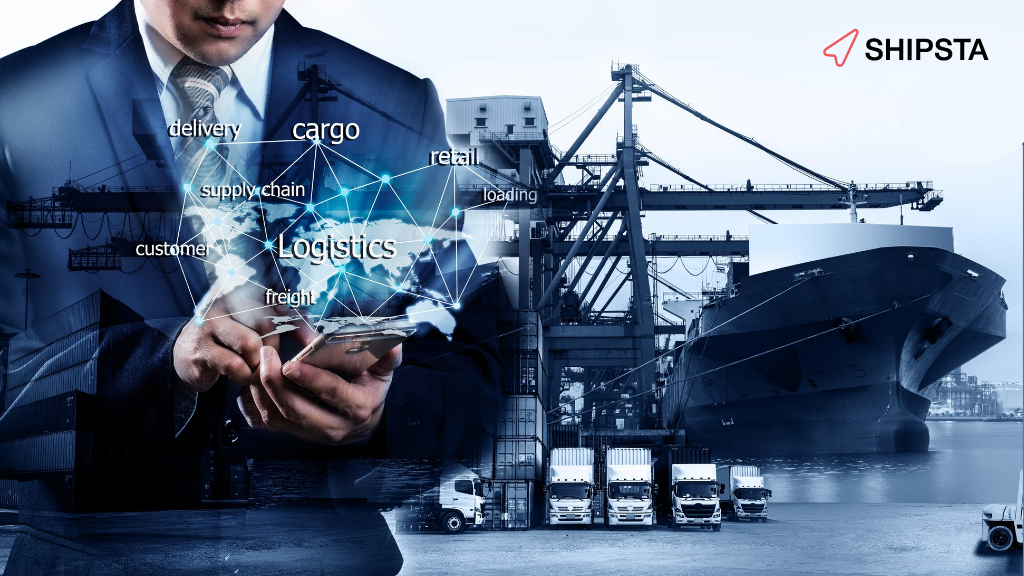Freight procurement is a tough job, even without the additional hurdles multinational corporations (MNCs) face.
When you’re managing several brands in various international markets, your freight procurement plan will inevitably be extremely complex and throw up significant challenges.
So, what are the major challenges multinational corporations face when sourcing and procuring freight? And how can you adjust your strategy to overcome them?
1. Measuring performance and strategic success
It’s tough to get visibility into what teams are doing in any large, global organization. But in freight procurement, which struggles with transparency generally, it can feel impossible.
When you have hundreds of team members managing thousands of lanes and data points, it’s extremely difficult to get a clear picture of what’s happening and how your strategy is performing.
How can you get visibility into your procurement team’s performance?
Getting a global overview isn’t just about having access to all your data but presenting it visually so it's easy to analyse.
If you want to get a full picture of your entire team’s performance, managing everything on one digital platform is a must. This ensures you have a single source of truth for all your procurement data and can use digital tools to perform advanced calculations and generate easy-to-understand visuals. This way you get the fullest picture possible of your team and have the information you need to make the best strategic decisions.
2. Information sharing and team communication
One of the most underestimated corporate issues is how much time employees spend searching for internal information. It can cost you thousands of hours of productivity per year.
Your business already has this information – so why are your team wasting man-hours searching for it?
Ensuring your employees can easily find the information they need to do their jobs and enabling seamless communication between teams is key to overcoming this challenge.
However, MNCs face extra hurdles when it comes to information sharing and team communication. With teams based all over the world, working in different time zones, your shippers can end up on a wild goose chase trying to get the info they need.
How can you ensure better communication in a global procurement team?
Ensuring that everyone in your team has the right access to current and historical rates has become a lot simpler thanks to technology over the last few years. Digital freight procurement and management software allow everyone to access all your rates online – all they need is their login and an internet connection.
Having all your rates in a single accessible platform makes it easy for everyone in your business to find the information they need quickly.
If you’re managing a larger hierarchy and sensitive information, you can set access permissions for specific users or teams. This way you can always stay in control of your data, no matter how many people are working for you.
3. Managing the shipping needs of different brands
You’ll be no stranger to the complex and specific requirements each of your company’s brands must meet.
Your ability to successfully manage these different logistical ecosystems is what makes you a leader – and it is likely why you’re where you are today.
But how can you constantly improve your processes and stay at the top of your game in an increasingly complex procurement world?
How can you manage freight procurement for multiple brands?
To manage a bespoke strategy and requirements, you need customizable tools. If you rely on generic software, it won’t have the capabilities to meet each of your brand’s specific needs.
Look for procurement software that offers a control tower and allows you to break down your strategy into different brands. Control tower features give you the complete overview you need with the bespoke settings each of your brands need.
When you're looking for freight procurement software, ensure the platform's features are customizable too. For example, our procurement platform enables procurement teams to create customizable scenarios, so you don’t need to just rely on basic scenarios like best price. This allows you to create preferred carrier scenarios for each of your brands – so your teams can instantly calculate scenarios based on each brand's specific carrier needs.
If you want to learn more about how we can customise our Shipsta platform to meet each of your brand’s specific needs, click here to book a call with one of our consultants.
4. Managing different currencies and getting the best rates
When you’re an MNC, you’re in a strong negotiating position and can often get top rates. However, the complexity of managing such large teams and shipping to so many international markets, means that it’s not always clear you’re getting the very best price possible.
You’re dealing with such a large budget and different currencies that if your team was overspending, it would be difficult to identify it.
How do you get the best freight rates as a multinational business?
As a large organization, you can’t monitor every single transaction that runs through your business. However, you can ensure your team is set up for success with the correct processes in place. Here are some smart ways to minimize the chance of overpaying for freight and ensure you’re getting the best rates possible.
- Integrate real-time rates into your sourcing strategy – You can now get real-time prices integrated into your rate sheet, so your team can immediately see which lanes they’re overpaying for. This ensures they tender lanes at the perfect moment and can negotiate prices with carriers with confidence.
- Standardise currencies using a platform – Your multinational team will be dealing with many different currencies. Miscalculations and human error dealing with all these currencies can lead to your team members paying above the odds for freight. Using a platform that automatically converts currency removes the chance your team can make an error like this.
- Use automated invoice auditing – Did you know 10% of carrier invoices are incorrect? This can add up when you're shipping thousands of dollars worth of freight. Using automated invoice auditing software will ensure your team never overpay your carriers again.
5. Reducing shipping CO2 emissions
Multinationals are under unprecedented pressure from customers and investors to reduce CO2 emissions. And your company's shipping emissions are in the spotlight right now.
People now expect MNCs to measure and report Scope 3 emissions, not just Scope 1 and 2. One of the biggest contributors to Tier 3 emissions is often shipping. So if you’re not tracking your shipping emissions and reporting on how you plan to reduce them already, you shouldn’t wait any longer!
Consumers and investors are closely monitoring companies’ sustainability credentials, and if yours aren’t up to scratch – it’ll start impacting your bottom line.
How can you reduce global shipping CO2 emissions?
The first step to reducing shipping CO2 emissions is to know what your current emissions are and create a plan to reduce them. Leading procurement platforms offer emissions calculators that help you set the baseline for your sustainable strategy – so you know the level you need to work down from.
If you want to make an immediate impact on your shipping CO2 emissions, you can reduce emissions at the point of procurement with our sustainability software ShipstaPLANET too. You can instantly see which lanes and carriers have the highest and lowest CO2 emissions and build a sustainable strategy that fits your needs. Learn more about ShipstaPlanet in the link below.
About SHIPSTA
SHIPSTA powers smart logistics procurement with a digital platform that connects shippers and carriers to ensure a frictionless procurement process for spot and contract buying, entirely online. It automates complex tasks, provides unrivalled visibility and supports fast data-driven decision making.
Designed and built by experts in logistics procurement, SHIPSTA is bringing transparency, automation and efficiency to the global logistics industry. It is used by some of the world’s largest companies to respond to market volatility, control freight costs and manage risk. The company was founded in 2015 and is based in Mertert, Luxembourg and Hamburg, Germany.



